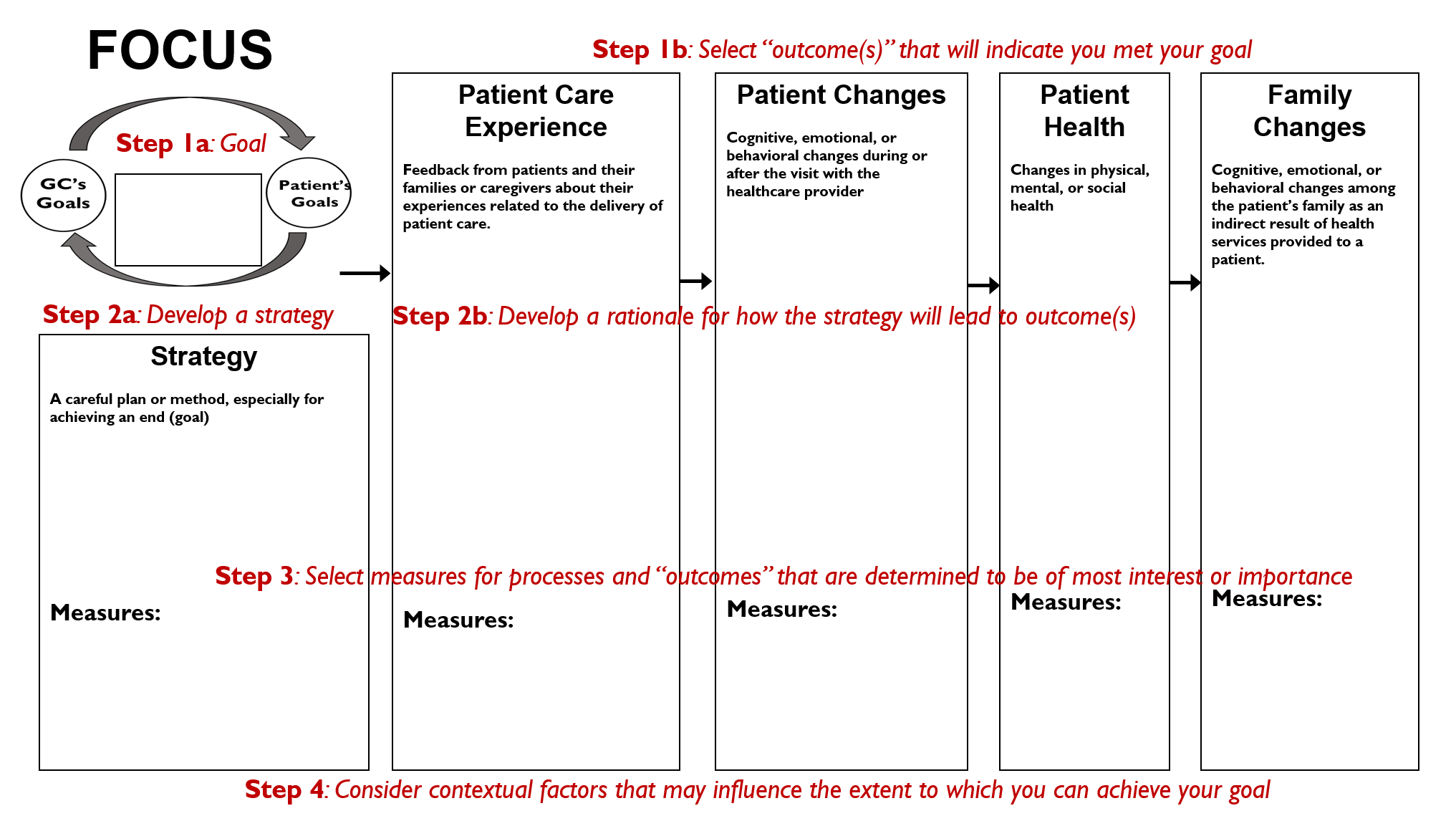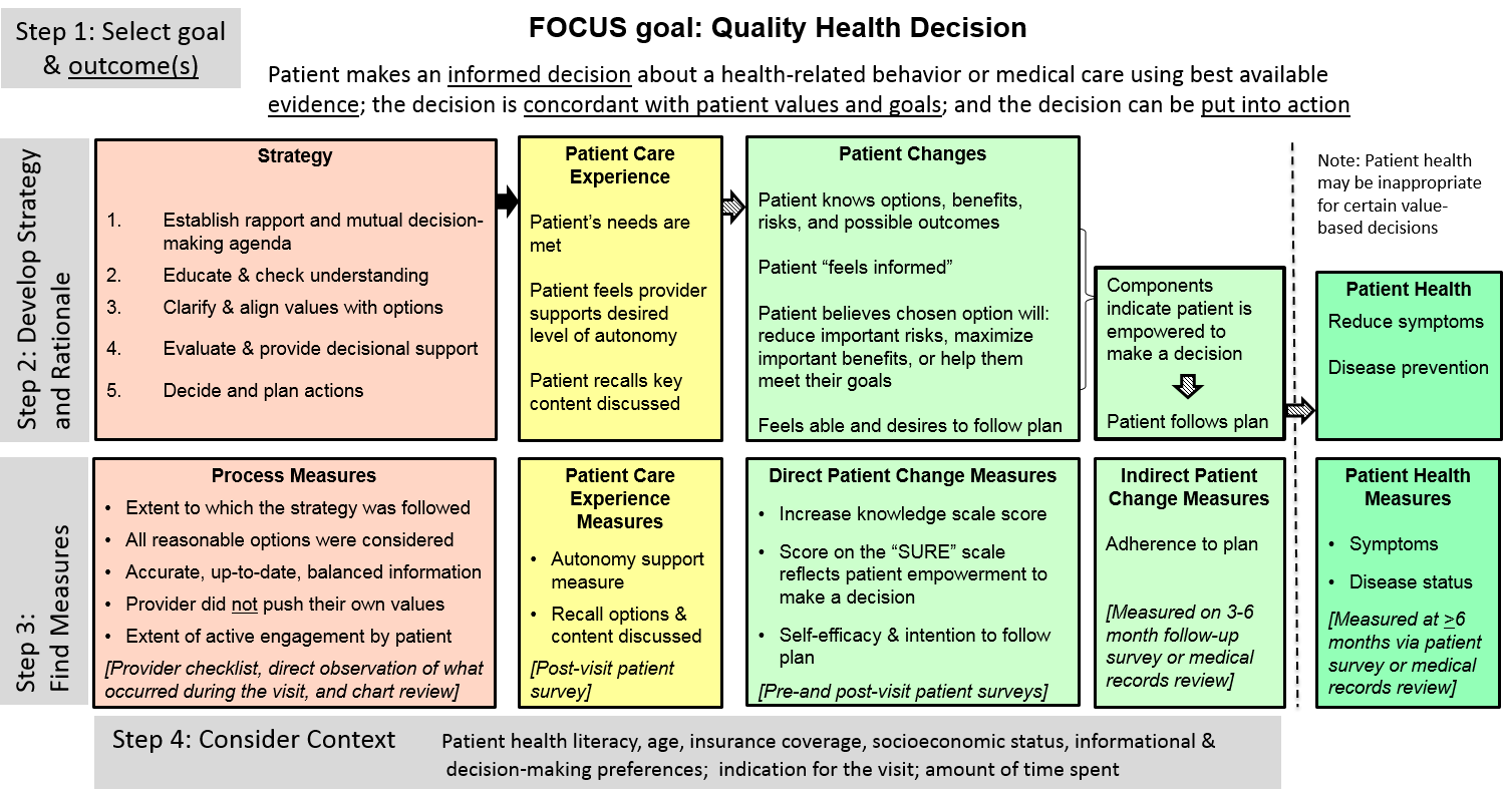Use the worksheet that can be downloaded here and follow the five steps described below the figure

- Select the goal* of the stakeholder (e.g., patient, client, health care provider). Then select and define the desired cognitive, emotional or behavioral change(s) (Table 3) or health outcome(s) (Table 4) that will best indicate whether you met your goal.
- Develop a strategy by listing communication skills and processes from Table 1a that you plan to combine to achieve your goal. Consider how your strategy may directly or indirectly influence patient care experiences (Table 2) or other patient changes (Table 3). Determine which of these experiences or changes (if any) might have an important influence on the goal you selected in step 1. [NOTE: You may want to map out a figure illustrating direct and indirect pathways to your outcome (similar to the example below). We recommend including scientific data and theories to support your rationale for why and how your strategy is expected to help achieve your goal.]
- Find measures. a) Identify or create process measures to ensure that your strategy was implemented as intended (Table 1b). b) Describe how you will measure important patient change(s) and/or health outcome(s) [NOTE: Measures in Table 3 and Table 4 may provide some ideas, but they have NOT been thoroughly evaluated and several may need additional validation studies before they can be recommended for widespread use]. c) What measures will you use (if any) to evaluate aspects of the patient care experience? (Table 2)
- Consider which contextual factors could influence the extent to which you can achieve your goal (e.g., disease-related characteristics, health literacy and numeracy, health insurance status and type, social support, cultural context, policies, laws, healthcare system factors and provider self-awareness.)
*Goals of clinical communication generally align with one of the following domains
- Improving the patient care experience (e.g. patient needs are met, positive perceptions of patient/provider relationship). [NOTE: Although important and reflective of patient-centered communication, typically the ultimate goals of patients and providers go beyond the patient care experience.]
- Promoting desired cognitive, emotional, or behavioral changes among the patient or their family members (e.g., increasing knowledge, decreasing negative emotions, facilitating a quality health decision, improving family communication about genetic risk, improving adherence to health recommendations)
- Improving patient health (e.g. reducing symptoms or side effects, lowering cholesterol levels or blood pressure, improving mental health, etc.)
Example

FOCUS has now been published and can be cited as follows: Cragun, D. & Zierhut, H. Development of FOCUS-GC: Framework for Outcomes of Clinical Communication Services in Genetic Counseling. J. Genet Counsel (2017). https://doi.org/10.1007/s10897-017-0145-0